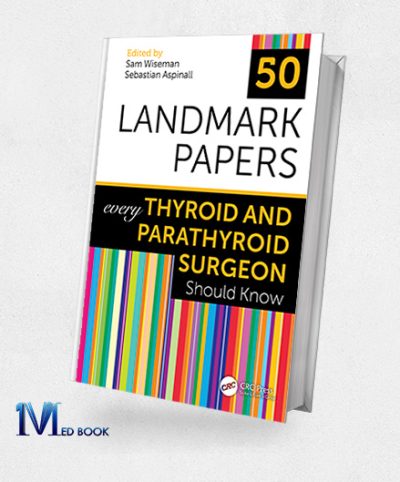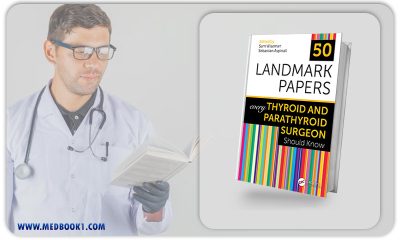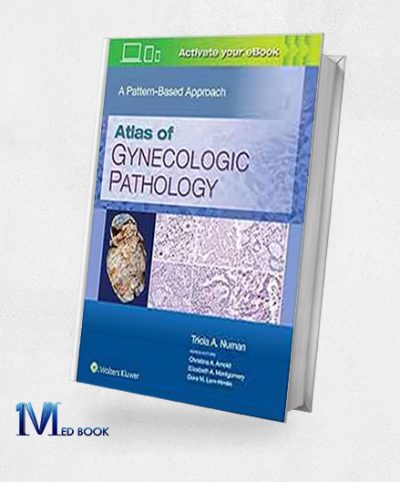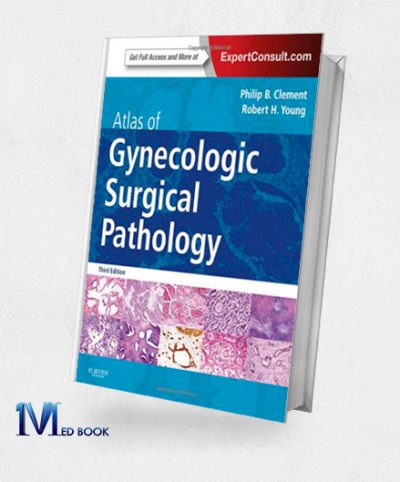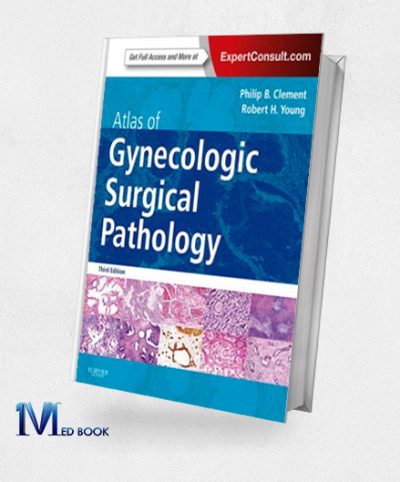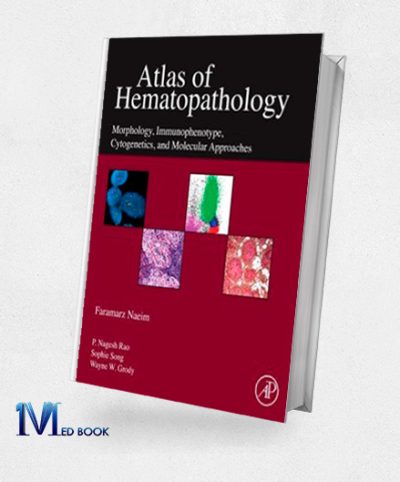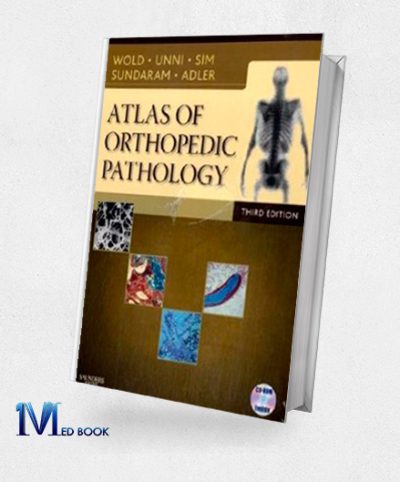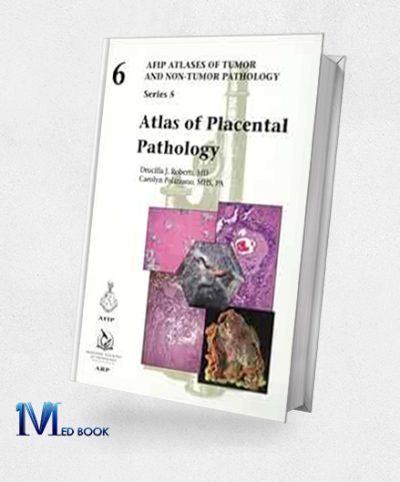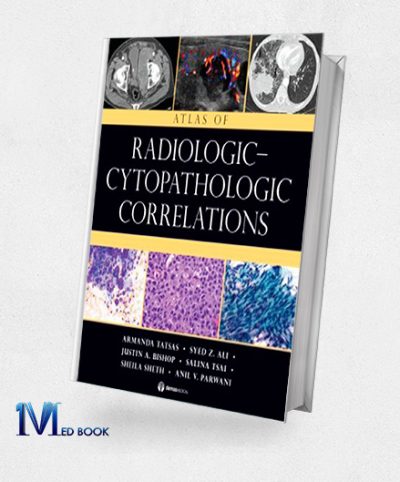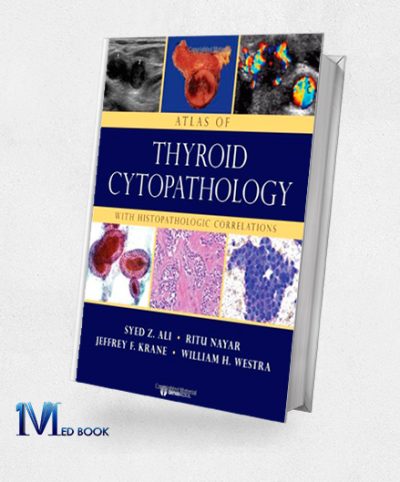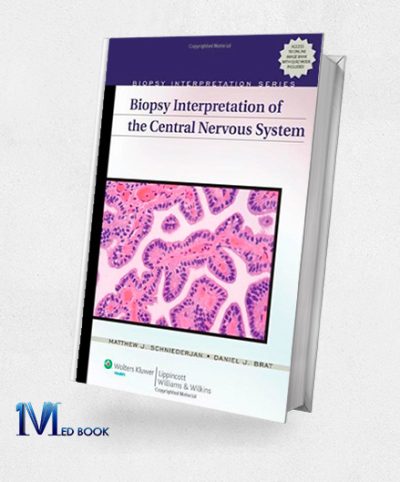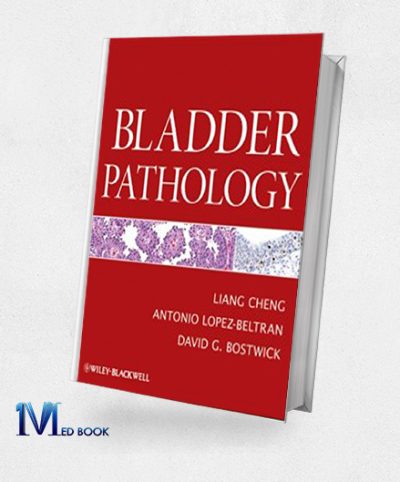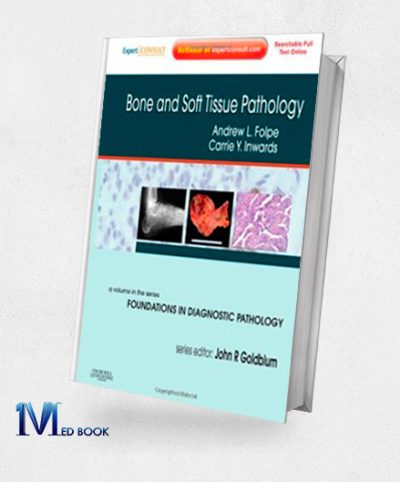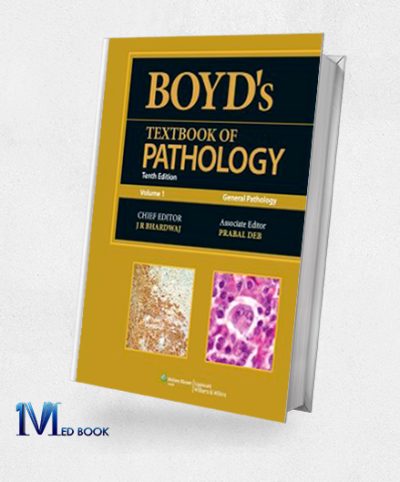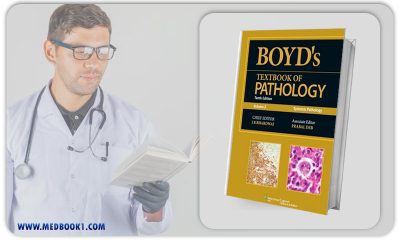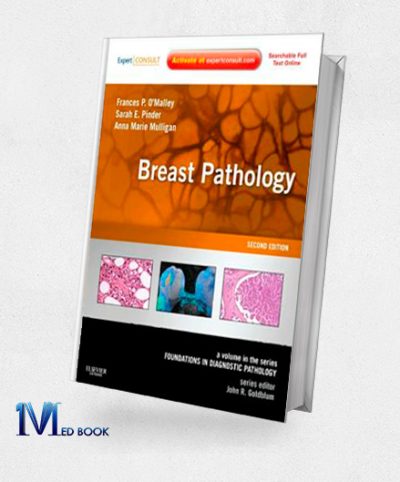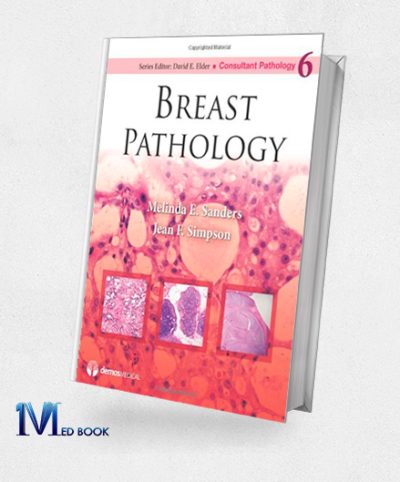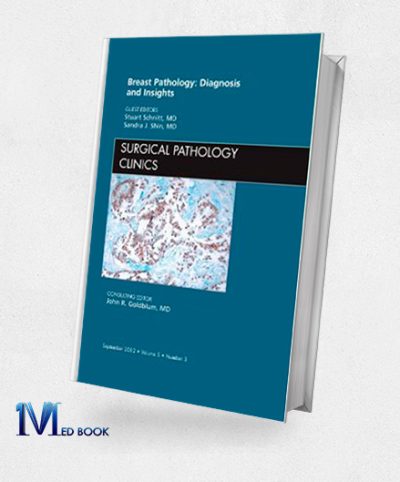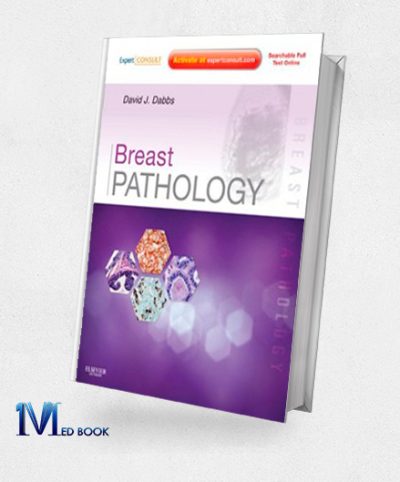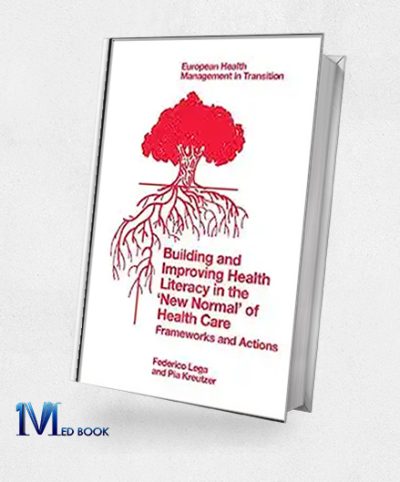Pathology
50 Landmark Papers every Thyroid and Parathyroid Surgeon Should Know (EPUB)
Original price was: $66.95.$22.00Current price is: $22.00.Atlas Of Gynecologic Pathology A Pattern-Based Approach (EPUB)
Original price was: $279.99.$55.00Current price is: $55.00.Atlas of Gynecologic Surgical Pathology 3rd Edition (Original PDF from Publisher)
Original price was: $223.56.$32.30Current price is: $32.30.Atlas of Gynecologic Surgical Pathology Expert Consult Online and Print 3rd Edition (Original PDF from Publisher)
Original price was: $251.48.$33.90Current price is: $33.90.Atlas of Head and Neck Pathology 2nd Edition (Original PDF from Publisher)
Original price was: $749.78.$61.30Current price is: $61.30.Atlas of Hematopathology Morphology Immunophenotype Cytogenetics and Molecular Approaches (Original PDF from Publisher)
Original price was: $152.49.$28.30Current price is: $28.30.Atlas of Orthopedic Pathology 3rd Edition (Original PDF from Publisher)
Original price was: $229.99.$32.60Current price is: $32.60.Atlas Of Placental Pathology (AFIP Atlas Of Tumor And Non-Tumor Pathology, Series 5, Volume 6) (Original PDF From Publisher)
Original price was: $296.09.$110.00Current price is: $110.00.Atlas of Radiologic Cytopathologic Correlations (Original PDF from Publisher)
Original price was: $115.00.$22.00Current price is: $22.00.Atlas of Thyroid Cytopathology With Histopathologic Correlations (Original PDF from Publisher)
Original price was: $110.98.$27.00Current price is: $27.00.Basic ICD 10 CM And ICD 10 PCS Coding Exercises , 8th Edition (EPUB)
Original price was: $84.95.$32.00Current price is: $32.00.Biomedical Calculations Principles and Practice (Original PDF from Publisher)
Original price was: $56.95.$20.40Current price is: $20.40.Biopsy Interpretation of the Central Nervous System (Biopsy Interpretation Series)
Original price was: $154.85.$26.00Current price is: $26.00.Biopsy Interpretation The Frozen Section 2nd Edition
Original price was: $139.93.$28.00Current price is: $28.00.Bladder Pathology (Original PDF from Publisher)
Original price was: $174.00.$23.00Current price is: $23.00.Bone and Soft Tissue Pathology A Volume in the Foundations in Diagnostic Pathology Series (Original PDF from Publisher)
Original price was: $174.99.$29.60Current price is: $29.60.Breast Pathology A Volume in the Series Foundations in Diagnostic Pathology (ORIGINAL PDF from Publisher)
Original price was: $189.14.$30.40Current price is: $30.40.Breast Pathology Consultant Pathology Volume 6
Original price was: $148.97.$21.60Current price is: $21.60.Breast Pathology Diagnosis and Insights An Issue of Surgical Pathology Clinics (Original PDF from Publisher)
Original price was: $83.00.$25.00Current price is: $25.00.Breast Pathology Expert Consult (Original PDF from Publisher)
Original price was: $295.94.$36.30Current price is: $36.30.Building And Improving Health Literacy In The ‘New Normal’ Of Health Care Frameworks And Actions (European Health Management In Transition) (EPUB)
Original price was: $80.00.$21.00Current price is: $21.00.Cell and Tissue Based Molecular Pathology A Volume in the Foundations in Diagnostic Pathology Series (Original PDF from Publisher)
Original price was: $163.80.$29.00Current price is: $29.00.Pathology
- Introduction to Pathology:
Pathology, often hailed as the cornerstone of medical diagnostics, stands as a sentinel at the crossroads of science and medicine. It is the discipline that delves into the nature and causes of diseases, providing crucial insights that form the bedrock of medical knowledge. As an indispensable branch of medicine, pathology plays a pivotal role in diagnosing illnesses, deciphering disease processes, and crafting informed treatment strategies. Its significance reverberates across the entire spectrum of healthcare, influencing the way we perceive, understand, and combat various medical conditions.
The Essence of Pathology:
At its core, pathology is the study of deviations from the normal state of health. It examines how these deviations manifest at various levels, from the molecular and cellular realms to the intricate architecture of tissues and organs. By unraveling the mysteries of diseases, pathologists contribute profoundly to the scientific understanding of the human body and its vulnerabilities.
Pathology serves as a diagnostic powerhouse, wielding a diverse array of techniques and methodologies to identify, classify, and understand diseases. From examining tissues under a microscope to unraveling the molecular intricacies of abnormal cells, pathologists play a pivotal role in providing clinicians with the information necessary to make accurate diagnoses and formulate effective treatment plans.
2. General Pathology and Systemic Pathology:
In the vast landscape of pathology, two key domains emerge—general pathology and systemic pathology. General pathology encompasses the fundamental principles that underlie disease processes across all organ systems. It delves into the universal concepts governing the onset, development, and progression of various medical conditions. This broad perspective allows pathologists to grasp the core mechanisms that drive diseases, laying the groundwork for comprehensive understanding.
On the flip side, systemic pathology takes a focused and organ-specific approach. It investigates diseases within the context of particular organs or organ systems, recognizing the nuanced manifestations and intricacies unique to each. By concentrating on specific areas, systemic pathology enables in-depth exploration, facilitating a more detailed comprehension of diseases at the organ level.
The Harmony of General and Systemic Pathology:
The synergy between general and systemic pathology is akin to a symphony where the universal principles elucidated by general pathology harmonize with the detailed organ-specific intricacies uncovered by systemic pathology. This collaboration equips healthcare professionals with a holistic understanding of diseases, allowing for more precise diagnoses and tailored treatment strategies.
As the field advances, the integration of general and systemic pathology becomes increasingly critical. The ability to connect overarching principles with specific organ manifestations enhances the diagnostic capabilities of pathologists, fostering a more nuanced and effective approach to patient care.
3. Cellular and Molecular Basis of Disease:
Venturing deeper into the fabric of pathology, we encounter the cellular and molecular basis of disease. Here, the focus zooms in on the smallest units of life—cells—and the molecular mechanisms that orchestrate health or contribute to disease. Abnormalities at these levels form the building blocks of numerous medical conditions, and understanding them is paramount for effective treatment.
Pathologists explore the intricate dance of molecules within cells, unraveling the ways in which genetic, epigenetic, and environmental factors converge to influence health outcomes. This microscopic journey allows for a profound comprehension of disease initiation, progression, and potential intervention points.
Navigating the Microcosm:
The cellular and molecular basis of disease is akin to navigating a microcosm where pathologists decipher the language of genes, proteins, and cellular signaling pathways. The insights gained from this exploration empower healthcare professionals to design targeted therapies that address the root causes of diseases, marking a paradigm shift towards precision medicine.
4. Histopathology and Tissue Examination:
Histopathology emerges as a pivotal player in the realm of pathology, where tissues become the canvases on which diseases paint their stories. Pathologists, armed with microscopes, scrutinize tissues at the microscopic level, seeking structural changes, abnormalities, and distinctive patterns associated with various diseases.
Tissue examination is a meticulous art, and pathologists act as detectives, interpreting the visual cues embedded in tissues. The microscopic insights gleaned from histopathology not only confirm diagnoses but also provide a roadmap for understanding the progression and manifestations of diseases. It is, in essence, the language through which diseases communicate their narratives to the discerning eyes of pathologists.
Decoding the Tissue Tapestry:
Histopathology is akin to decoding a tissue tapestry, where every cellular arrangement tells a story. This detailed examination allows for the identification of specific cell types, abnormal growth patterns, and the presence of pathogenic agents. The information derived from histopathology guides clinicians in tailoring treatment plans that are aligned with the unique characteristics of each disease.
5. Clinical Pathology and Laboratory Medicine:
The marriage of pathology with laboratory medicine gives birth to clinical pathology, a domain where the power of diagnostics is harnessed through laboratory tests. Clinical pathologists utilize a diverse array of tests to diagnose and monitor diseases, seamlessly integrating laboratory findings into patient care.
The laboratory becomes a realm of meticulous analysis, where blood, urine, and other bodily fluids reveal clues about the body’s inner workings. From blood counts to biochemical analyses, clinical pathology provides a dynamic snapshot of a patient’s health, aiding in the identification and tracking of diseases.
A Symphony of Tests:
Laboratory tests orchestrated by clinical pathologists are akin to a symphony of diagnostic instruments. Each test contributes a unique note to the overall melody, revealing specific aspects of a patient’s health. The integration of these findings into patient care ensures a comprehensive understanding, guiding clinicians in making informed decisions about treatment and management.
6. Pathogenesis and Disease Progression:
Pathogenesis, the roadmap of disease development, takes center stage in the pathology narrative. It is the examination of the series of events leading to the initiation and progression of diseases. Pathologists delve into the molecular, cellular, and tissue-level changes that set the stage for the clinical manifestations observed in patients.
Understanding pathogenesis provides a panoramic view of how diseases unfold. It elucidates the factors that influence disease progression, offering crucial insights into potential intervention points. This knowledge is transformative, shaping treatment strategies and influencing prognoses.
Unraveling Disease Narratives:
Pathogenesis is akin to unraveling the intricate narrative of diseases. It involves tracing the footsteps of abnormalities from their origins to the clinical stage, understanding how the molecular dance within cells translates into observable symptoms. This deep understanding allows for the formulation of interventions that target the root causes, potentially altering the course of diseases.
- Neuropathology and Cardiovascular Pathology:
Specialized branches of pathology, such as neuropathology and cardiovascular pathology, zoom in on diseases affecting specific systems. Neuropathology explores disorders of the nervous system, from the brain to the peripheral nerves. Cardiovascular pathology, on the other hand, delves into diseases of the heart and blood vessels.
These branches contribute significantly to the understanding and treatment of disorders within their purview. Neuropathologists dissect the intricacies of conditions like Alzheimer’s and Parkinson’s diseases, while cardiovascular pathologists navigate the complexities of heart diseases and vascular disorders.
Deciphering Neurological Enigmas:
Neuropathology is akin to deciphering neurological enigmas. The brain, with its vast complexity, presents a myriad of challenges and mysteries. Neuropathologists scrutinize tissues with precision, uncovering the structural anomalies that underlie conditions ranging from neurodegenerative diseases to tumors. Their insights inform treatment strategies and contribute to ongoing research aimed at unraveling the mysteries of the brain.
3. Cellular and Molecular Basis of Disease:
At the heart of pathology lies the exploration of the cellular and molecular basis of diseases. Abnormalities at these intricate levels form the building blocks of numerous medical conditions. Understanding how these deviations contribute to the development of diseases is of paramount importance. Such knowledge not only unravels the mysteries of disease initiation but also lays the foundation for designing effective treatment strategies that target the root causes at the cellular and molecular levels.
4. Histopathology and Tissue Examination:
Histopathology stands as a cornerstone in pathology, where pathologists meticulously examine tissues under the microscope. This detailed scrutiny allows for the identification of structural changes, abnormalities, and distinctive patterns associated with various diseases. Tissue examination, akin to reading the body’s narrative at a microscopic level, empowers pathologists to make accurate diagnoses and provides a roadmap for understanding the progression and manifestations of diseases.
5. Clinical Pathology and Laboratory Medicine:
Clinical pathology weaves the fabric of laboratory medicine into the realm of pathology. Clinical pathologists harness the power of laboratory tests to diagnose and monitor diseases, seamlessly integrating laboratory findings into patient care. This synergy between pathology and laboratory medicine not only facilitates accurate and timely diagnoses but also plays a crucial role in the ongoing management of diseases, ensuring a comprehensive approach to patient well-being.
6. Pathogenesis and Disease Progression:
Pathogenesis, the intricate series of events leading to the development of diseases, is a central focus in pathology. Understanding the factors influencing disease progression provides a roadmap for healthcare professionals. This knowledge is transformative, offering insights that shape treatment strategies, influence prognoses, and guide interventions that aim to alter the natural course of diseases.
7. Neuropathology and Cardiovascular Pathology:
Specialized branches such as neuropathology and cardiovascular pathology delve into diseases of the nervous system and cardiovascular system, respectively. These fields contribute significantly to our understanding of disorders affecting these critical systems and play a vital role in the development of targeted interventions. Neuropathology and cardiovascular pathology stand as beacons in the broader landscape of pathology, illuminating the pathophysiology of disorders that impact countless lives.
8. Forensic Pathology and Medicolegal Investigations:
In the realm of medicolegal investigations, forensic pathology takes center stage. Forensic pathologists meticulously analyze evidence obtained through post-mortem examinations to determine the cause and manner of death. Their findings are invaluable in legal proceedings, contributing essential insights that shape the course of justice. Forensic pathology stands at the intersection of medicine and the law, providing a vital service in untangling the mysteries surrounding fatalities.
9. Pathology in Precision Medicine:
Pathology undergoes a transformative journey in the era of precision medicine. Advancements in molecular diagnostics and personalized therapies revolutionize the practice of pathology, tailoring treatment approaches based on individual patient characteristics. This shift towards precision medicine underscores the adaptability of pathology in embracing innovative techniques that hold the promise of more effective and personalized healthcare.
10. Challenges and Innovations in Pathology:
Challenges in the Path of Precision:
While pathology stands as the cornerstone of medical investigation, it encounters formidable challenges that demand meticulous navigation. At the forefront is the quest for diagnostic accuracy—a challenge intensified by the increasing complexity of diseases and the need for swift and precise diagnoses. Pathologists grapple with the vast array of medical conditions, each presenting unique diagnostic intricacies.
The seamless integration of new technologies poses another challenge. As technology evolves at a rapid pace, pathologists must adapt to the latest diagnostic tools and methodologies. This integration demands continuous education and training to harness the full potential of cutting-edge technologies.
Moreover, the potential of artificial intelligence (AI) in pathology introduces both promise and complexity. While AI holds the potential to revolutionize diagnostics by augmenting pathologists’ capabilities, its integration requires careful consideration of ethical, legal, and regulatory aspects. Striking the right balance between human expertise and AI assistance is an ongoing challenge.
Innovations Lighting the Path:
In the face of these challenges, innovations in pathology serve as beacons of hope, illuminating the path forward. Technological advancements have given rise to enhanced diagnostic techniques that allow for more precise and rapid disease identification. For example, digital pathology enables the sharing and analysis of pathology images, fostering collaboration among pathologists and facilitating remote consultations.
The integration of artificial intelligence introduces innovative solutions to diagnostic challenges. Machine learning algorithms can analyze vast datasets, aiding pathologists in identifying patterns and anomalies that may escape the human eye. While AI is not a replacement for human expertise, it complements pathologists’ skills, leading to more accurate and efficient diagnoses.
Pathology’s Technological Renaissance:
The field of pathology is undergoing a technological renaissance, leveraging innovations such as next-generation sequencing for comprehensive genomic analysis. This enables the identification of genetic mutations associated with various diseases, paving the way for personalized treatment approaches. The integration of molecular diagnostics into routine pathology practice enhances the precision of diagnoses and informs targeted therapies.
Telepathology, another innovative stride, allows pathologists to remotely examine specimens and collaborate with colleagues worldwide. This technological leap facilitates the sharing of expertise across geographical boundaries, particularly beneficial in areas with limited access to specialized pathology services.
Ethical Dimensions of Innovation:
Amid the excitement of technological innovations, ethical considerations loom large. The responsible integration of AI in pathology demands careful attention to issues such as data privacy, bias in algorithms, and the impact on the human-touch in medical practice. Striking a balance between embracing technological advancements and upholding ethical standards is paramount.
11. Conclusion:
In conclusion, pathology emerges not only as a diagnostic powerhouse but as a dynamic field that evolves in tandem with scientific and technological advancements. Its multifaceted role in understanding, diagnosing, and treating diseases reflects the breadth and depth of its contributions to medical science.
The diverse branches of pathology, from the microscopic examination of tissues in histopathology to the exploration of diseases at the molecular level in molecular pathology, showcase the field’s versatility. General pathology and systemic pathology collaborate to provide a comprehensive understanding of disease processes, while clinical pathology integrates laboratory findings into patient care, enhancing diagnostic precision.
As pathology continues to evolve, its ongoing contributions to healthcare underscore its timeless relevance. The challenges encountered on this journey—from ensuring diagnostic accuracy to navigating the ethical dimensions of technological innovation—are met with resilience and innovation. Pathology remains an integral compass in the vast landscape of medicine, guiding healthcare professionals in unraveling the complexities of the human body and its ailments. In the ever-evolving narrative of medical science, pathology‘s story is one of unwavering commitment to precision, innovation, and the pursuit of excellence.

